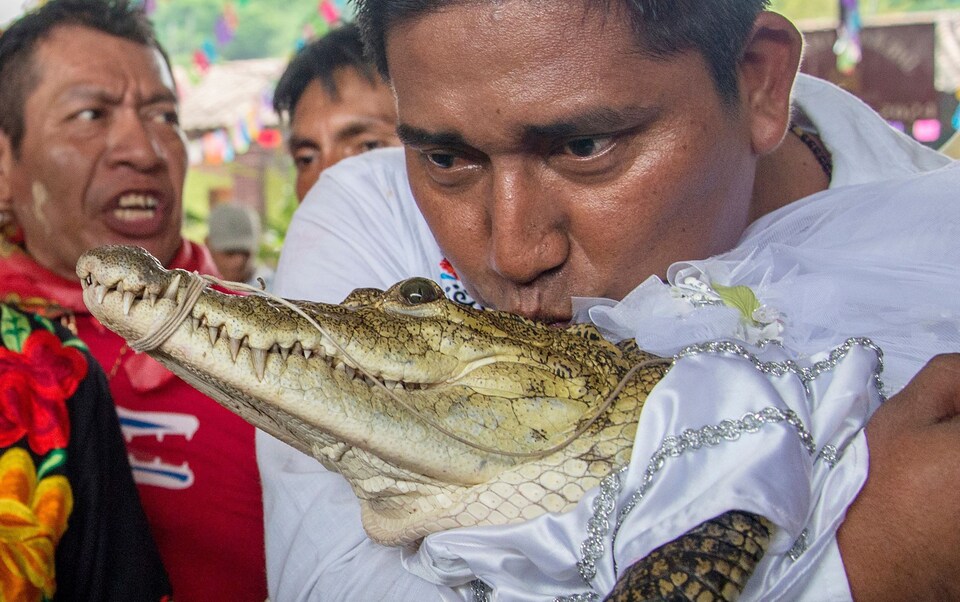Legend has it that frictions were overcome when a Chontal king, embodied in modern times by the mayor, wedded a princess girl of the Huave Indigenous group – as represented by the female alligator.
The Crocodile’s snout is bound shut to avoid any pre-marital mishaps.
The Huave live along coastal Oaxaca state, not far from the inland town in the Tehuantepec isthmus of Mexico.
The wedding allows the sides to “link with what is the emblem of Mother Earth, asking the all-powerful for rain, the germination of the seed, all those things that are peace and harmony for the Chontal man,” explained Jaime Zarate, a chronicler of San Pedro Huamelula.
Before the ceremony, the reptile was dressed in a green skirt, a colourful hand-embroidered tunic and a headdress of ribbons and sequins – with its snout bound shut to avoid any pre-marital mishaps.
It was then taken house to house to allow locals to hold her in their arms and dance.
Later, she was put in a white bride’s costume and taken to the town hall for the blessed event.
As part of the ritual, Joel Vasquez, a local fisherman, tossed his net and intoned the town’s hopes that the marriage would bring “good fishing, so that there is prosperity, equilibrium and ways to live in peace.”
After the wedding, the mayor danced with his bride to the sounds of traditional music.
“We are happy because we celebrate the union of two cultures. People are content,” Sosa told news agency AFP.
As the dance wound down, the mayor planted a kiss on the snout of the “princess girl.”

